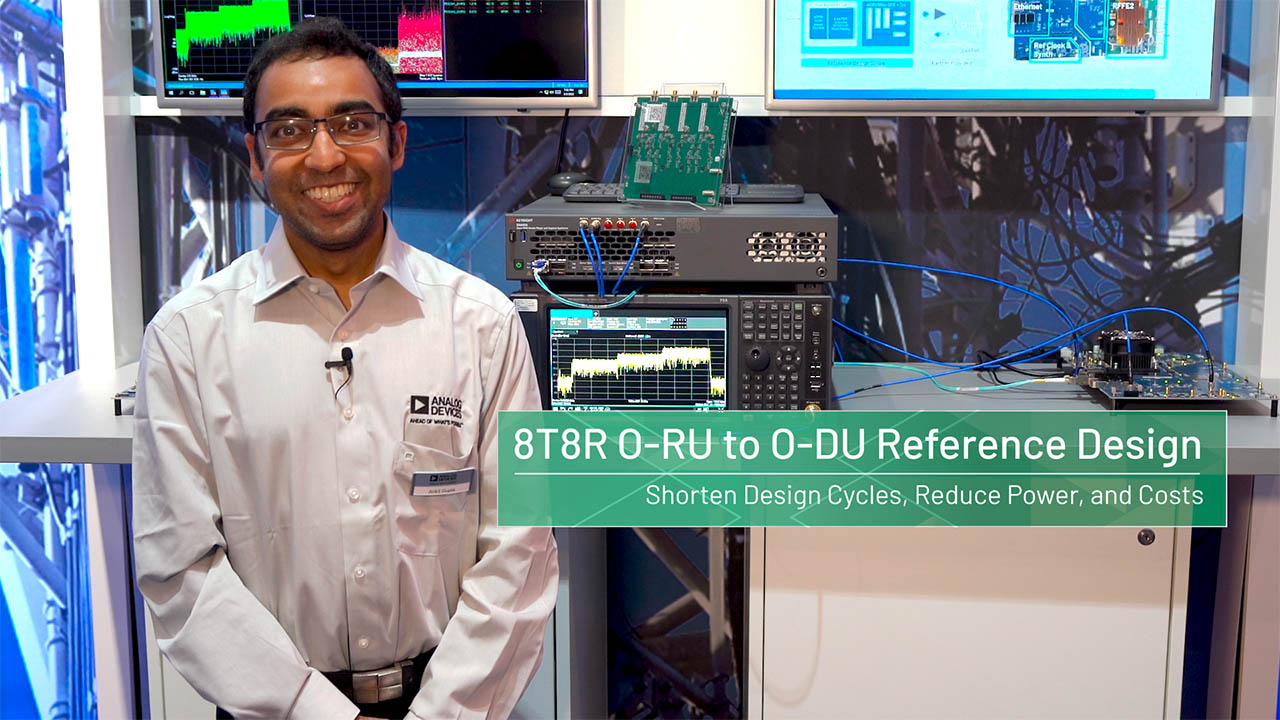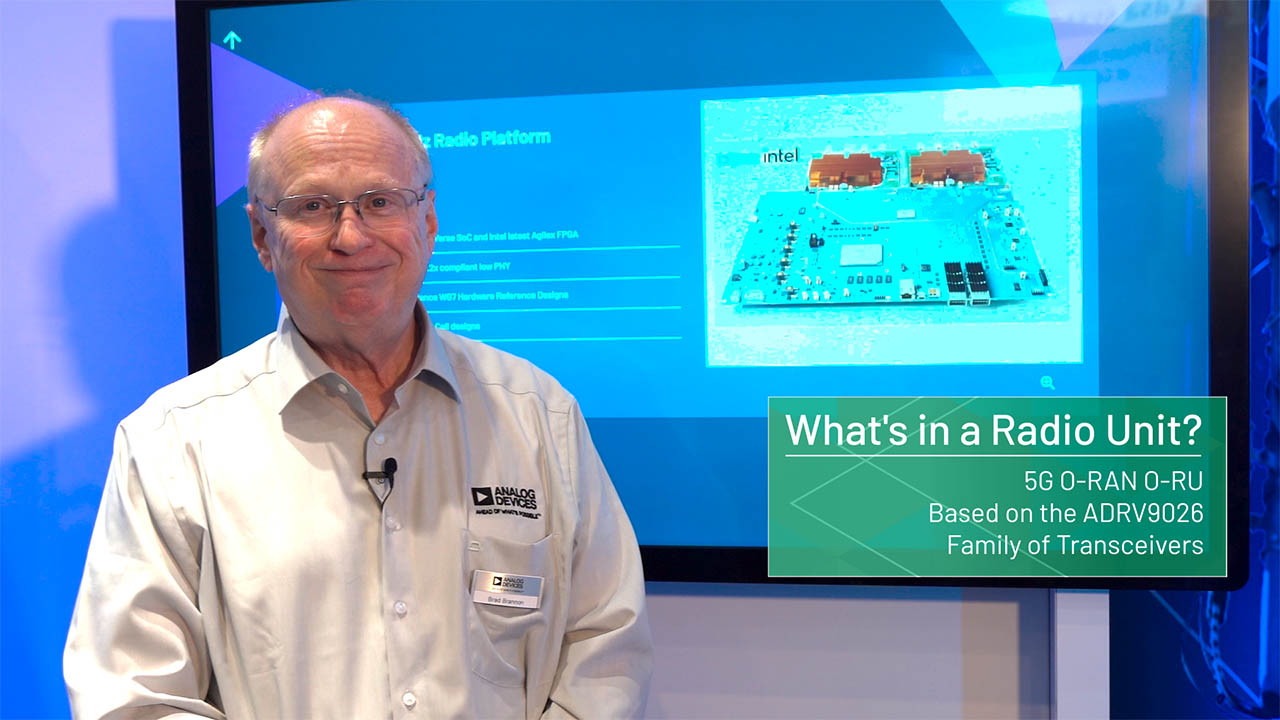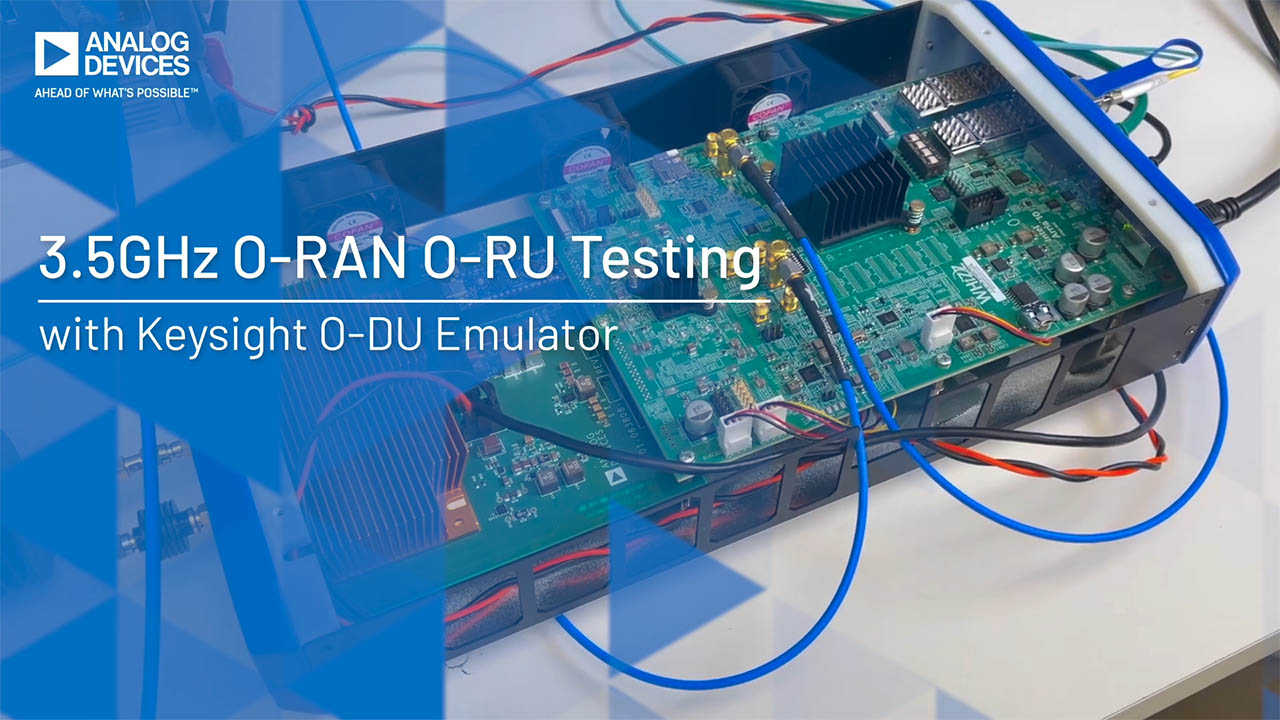
Wireless Infrastructure Solutions
Analog Devices cemented its reputation as a leader in wireless infrastructure by creating the technologies that enabled the first small cells and the roll out of 5G mMIMO. With technology solutions that cover all infrastructure applications, we have the broad portfolio and deep domain expertise to help ensure your design project is successful.
Explore Applications in Wireless Infrastructure Solutions
4G/5G Radio Unit
The Kerberos RU platform is a complete interoperability tested RU solution from the optical fronthaul to RF for macro and small cell radio units applications. The platform allows for easy band, bandwidth, and power customization. The fully integrated platform leverages market-leading technologies that drive advanced 4G and 5G RU requirements and include support for all sub-6 GHz band and power variants, including multiband applications.
This Open RAN and development platform includes our advanced 8T8R 400 MHz, ADRV904x ADI RadioVerse SoC, and commercial grade and interoperability tested O-RAN 7.2a IP, running on the Intel® advanced node AGF014 Agilex™ FPGA.
Our full 5G radio platform for the O-RAN ecosystem addresses critical energy consumption and the design challenges of next-generation networks. The ADRV904x with digital front end is the lowest power integrated transceiver, with architecture that reduces RF front-end complexity and relaxes filter requirements. The DFE includes advanced algorithms for digital predistortion (DPD), crest factor reduction (CFR), and channel digital up/down conversion (CDUC/CDDC). The power signal chain is tuned to reduce the signal-to-noise ratio, improving the performance and efficiency of the RU. The full-featured, commercial ready 7.2a O-RAN IP (eCPRI + low PHY) supports LTE, 5G, and NB-IoT.
Thought Leadership
Files and Downloads

JESD204B Survival Guide

Switches and Multiplexers Cheat Sheet
310.64 K

ADGM1004: 0 Hz/DC to 13 GHz, 2.5 kV HBM ESD, SP4T, MEMS Switch with Integrated Driver Data Sheet
519.25 K

UG1541: ADuCM410 Development System Getting Started Tutorial User Guide
1.11 M

UG1848: Evaluating the ADL5206 1 GHz DGA with 30 dB Range and 1 dB Step Size
615.19 K

Silent Switcher Technology
1.74 M

ADuM4146 Isolated SiC Gate Brochure
1.31 M

Connectivity Solutions for the Internet of Things
1 M

AN-851: A WiMax Double Downconversion IF Sampling Receiver Design
262 kB

AN-0974: Multicarrier TD-SCMA Feasibility
634 kB

Power You Can Trust: Achieving Efficient Battery-Powered Solutions
11.85 M

Industrial Battery Chargers Overview
2.09 M

Understanding Silent Switcher Technology: High Efficiency, Low EMI eBook
7.75 M

AD9363 Integrated Programmable RF Transceiver
456.05 K

ADMV4828: 24.0 GHz to 29.5 GHz Transmit/Receive Dual Polarization Beamformer Data Sheet
147.13 K

RF, Microwave, and Millimeter Wave Product Selection Guide
9.7 M

Precision Products and Signal Chain Solutions: Selection Guide 2019
13.38 M
{{modalTitle}}
{{modalDescription}}
{{dropdownTitle}}
- {{defaultSelectedText}} {{#each projectNames}}
- {{name}} {{/each}} {{#if newProjectText}}
-
{{newProjectText}}
{{/if}}
{{newProjectTitle}}
{{projectNameErrorText}}

















